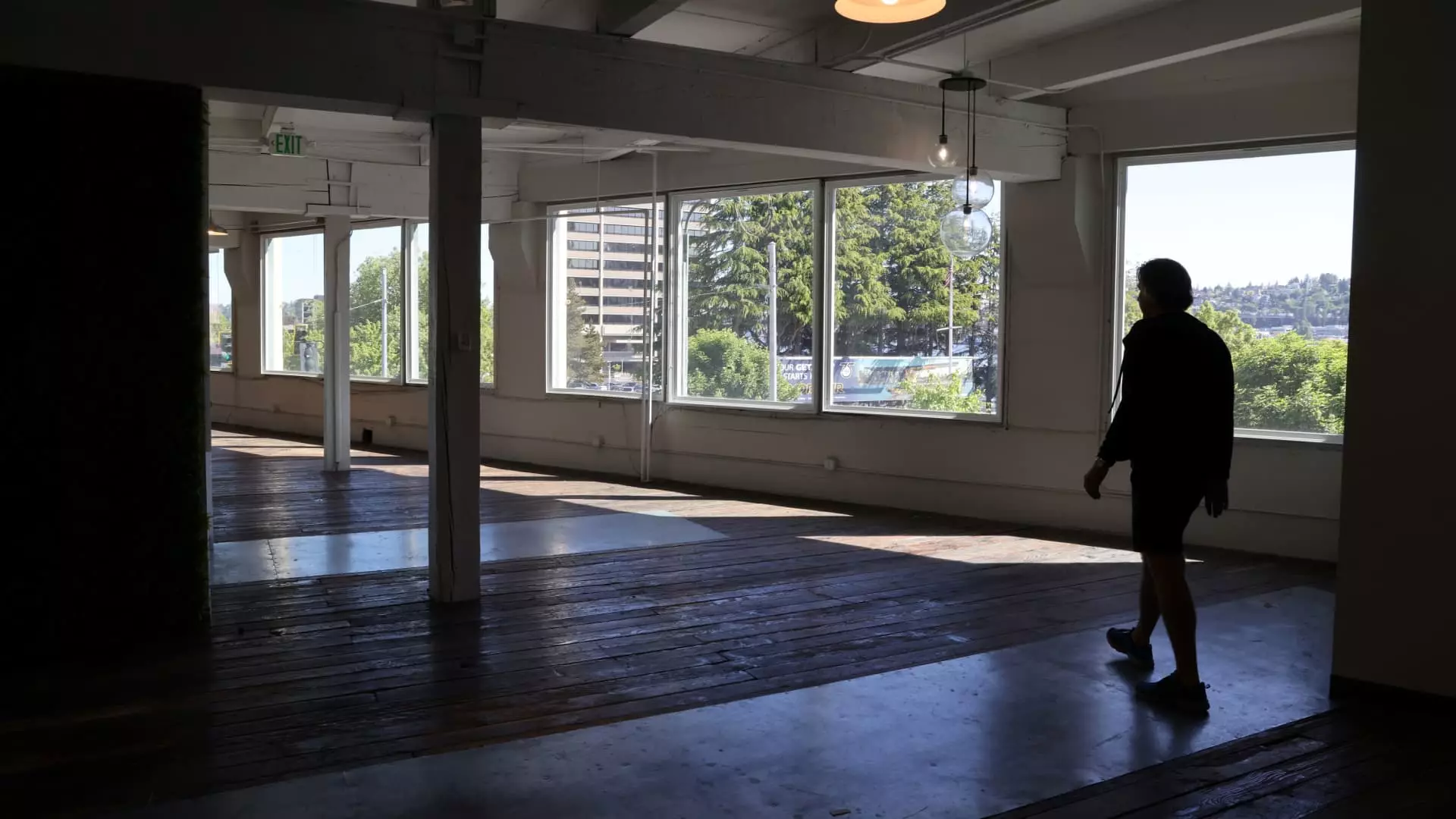The American office market, long associated with the hustle of nine-to-five routines, stands at a pivotal crossroads. After enduring years of relentless turmoil, exacerbated by the seismic shifts instigated by the COVID-19 pandemic, we now observe a critical transformation. The market is no longer merely adapting; it is actively reinventing itself, albeit amid significant challenges. This year marks a historical moment: for the first time in two and a half decades, the number of office spaces being converted for alternative uses or demolished will surpass new constructions. A trend that could fundamentally alter the landscape of commercial real estate.
While on the surface, this shift may appear like an alarming sign of decline, a deeper analysis reveals an invigorating potential. The removal of obsolete office spaces signals a necessary response to an evolving workforce increasingly favoring flexibility. A steady pivot towards remote and hybrid work structures has created a scenario where traditional office landscapes struggle to attract foot traffic. This phenomenon is not merely a blip on the radar; with vacancy rates hovering ominously around 19%—a figure few would have thought conceivable in a pre-pandemic world—it’s part of a broader re-evaluation of workspaces.
Demolition: A Strategic Necessity
According to data from CBRE, this year’s projected demolition and conversion of office spaces across the nation’s largest markets will total 23.3 million square feet, dwarfing the mere 12.7 million square feet slated for new construction. This is not merely a sign of decline; it is a strategic recalibration. In an environment where many employees resist returning full-time to disparate workspaces, the shift towards fewer, more vibrant, and purpose-driven environments is essential. It hinges on the understanding that less can indeed be more.
This entrenchment of patient yet guaranteed transformations encourages building owners and developers to leverage obsolete spaces creatively. The likely conversion of traditional offices into multifamily residences is not merely a trend; it’s a pragmatic response to increased housing demands in urban locales. CBRE revealed that since 2016, such conversions have resulted in approximately 33,000 housing units. With an additional 43,500 units in the pipeline, these repurposed spaces stand as beacons of innovation in a fast-evolving urban fabric.
A Silver Lining in Vacancy Rates
Critics may argue that these trends primarily emerge from a state of despair rather than innovative resurgence. However, such skepticism overlooks the crucial fact of net absorption—the balance between newly occupied real estate and vacated spaces. For the past four quarters, net absorption showed a positive trend after a prolonged decline, signaling a resurgence in office leasing. This shift denotes that companies are now seeking physically occupied spaces, responding to a tightening labor market where employees are increasingly willing to flock back to in-person settings.
As rent starts stabilizing, particularly in prestigious office locations and Class A spaces, the dynamic is poised to change. It’s not merely about reclamation; it represents a rejuvenation of the city’s economic heartbeat. Major players like Vornado and SL Green are in favorable positions to capitalize upon this fundamental shift toward more desirable office environments. Their investments in high-quality, flexibly designed spaces align precisely with the evolving needs of both employers and employees in a post-pandemic world.
Future Challenges and Opportunities
Despite the clear signs of recovery within select segments of the market, the office landscape is fraught with challenges. The transformation is not without its growing pains. The diminishing supply of properties ripe for conversion and the ever-looming specter of high construction costs pose significant hurdles. The complexities involved in transitioning spaces can prove cumbersome, especially as developers encounter financing struggles and challenges in sourcing skilled labor.
Nonetheless, there is a palpable optimism in the air. The obsolescence of outdated office spaces, rather than signaling an end, is projected to herald a new era of urbanism that is more inclusive and responsive to community needs. It’s about fostering vibrant spaces that reflect the pace of contemporary life, which increasingly prioritizes flexibility, accessibility, and cultural relevance.
As we witness these transformations unfold, it’s imperative to remain optimistic about the potential that lies in this evolution. The office market, in its current state of flux, is not merely a casualty of a pandemic-driven world but rather a harbinger of a brighter, more adaptable future. Through creative conversions and innovative repurposing, the realms once dominated by rigid office spaces will soon breathe new life into urban environments, benefitting both developers and communities at large.

